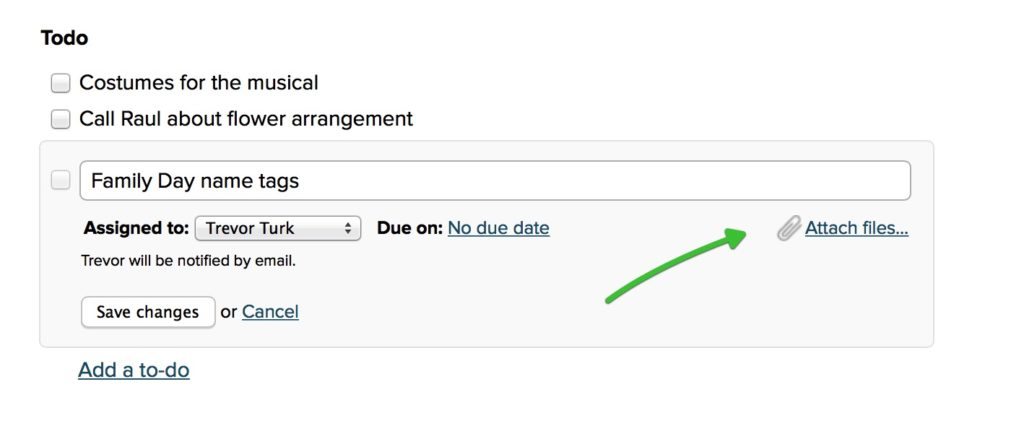Have suggestions for products that you’d like to see reviewed by our real estate technology expert? Email Craig Rowe.
The pitch
There’s almost no end to the things we can use software to manage.
Customer Relationships.
Transactions.
Contacts.
Documents.
Emails.
Unfortunately, no one system is good at all of them. Some are good at a couple. A few are great at one of them, and plenty stink at all of them.
So where do we put Basecamp?
The sale
Basecamp was developed by website design company 37Signals that wanted a better way to manage projects.
So, is it a project manager? Maybe.
Agents should think of a project as a listing. You start by inviting team members, like an assistant and the office marketing professional, and even your clients.
Between the group, you can swap messages, upload and comment on files, write notes, type letters, assign due dates and build a calendar. You can also easily set permissions for who can see what documents or notes.
What I like about Basecamp is that you never need to leave its interface to advance the project. Information is shared within it, and the engagement points are many.
Files that are uploaded into a project are viewable only by those team members. There’s no reason you can’t upload copies of the listing agreement, drafts of marketing fliers, lot maps, restrictive covenants, as well as property pictures and videos.
There’s a very tidy To-Do list tool. Build To-Do lists according to each phase of the project, e.g., a staging list, an open house list, a showing list. Assign tasks, make comments, and check ’em off. You can sort To-Dos according to who’s responsible or when they’re due.
Discussions is a great feature. Essentially a forum within a project, it’s a place to create a topic and talk about it. If a Web page is being built for a listing, create a discussion about it, upload drafts, and invite the clients for feedback.
Setting access parameters for clients is simple. Basecamp even presents a number of prompts to ensure you’re doing it correctly.
Again, everything is contained within Basecamp’s clean, colorful user interface. There isn’t a real estate-centric CRM (customer relationship manager) or transaction management tool that comes close to being able to juggle this much content in such a visually ergonomic fashion.
There’s a Documents library in Basecamp, too. Word docs and PowerPoints and PDFs can all be uploaded and sorted and viewed.
Agents can do all this for multiple listings at one time, and that’s when Basecamp excels. It keeps everything neatly sorted. Working in one project, you can choose to see nothing about the other projects, which could be immensely beneficial for busy teams.
If you’re comfortable with how everything went, you can save that project as a template for use in the next listing. You can also move or copy common listing projects to new listing projects using a couple of drop-down menus. Easy stuff.
I used Basecamp for a few years and generally really enjoyed working in it. I used Writeboard (now called Text Documents) to draft blogs and website content and solicit feedback from team members. I sent links to pages or assigned To-Dos for my clients to review what I wrote.
I found that Basecamp sometimes encourages too much use. Basecamp team leaders need to actually lead. Discussions and comments can get off-track, quickly turning into sports team message boards. Important stuff gets lost in the proverbial din of pointless discourse. Like a “Maury Povich” show.
If you don’t set your email preferences correctly, you can get inundated with project alerts. Set it up so that it only sends you a summary once or twice a day.
I’m psyched by the notion of inviting a buyer agent into the fold when your listing goes under contract. That could be fun. Negotiate on the Discussions, coordinate the closing date, schedule the inspections, swap documents, and monitor the contract milestones.
Think about how many emails go back and forth on these issues. There’s a lot of value in having it all condensed into a single interface.
The close
I have not yet used Basecamp’s apps for iPad, iPhone and Android devices, so I can only speculate as to their functionality. Given the company’s software development prowess, I suspect you’ll be OK.
Basecamp has been around for the better part of a decade, and it’s used everywhere. The support is outstanding, and the learning curve is minimal. And yes, it’s fun to use.
At $20 per month for 10 active projects and 3 gigabytes of storage, Basecamp is easily affordable.
All that said, what do you think Basecamp manages? Emails? Projects? People? Or transactions?
Do you use Basecamp? What do you think? Leave a comment and let us know!
Do you have a product for our tech expert to review? Email Craig Rowe.













